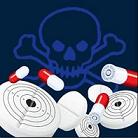Counterfeiting
EU fights rise in fake medicine, toys, consumer goods
 Counterfeiting of medicine, toys, food and other consumer goods is increasing, European Union customs officials said in a report voicing concern that more potentially dangerous products are coming onto the market.
Counterfeiting of medicine, toys, food and other consumer goods is increasing, European Union customs officials said in a report voicing concern that more potentially dangerous products are coming onto the market.
Customs agents in the 27-nation EU seized twice as many fakes of brand-name toys, and almost four times the cosmetics and personal-care items, last year as in 2006, the European Commission said in today's report. Seizures of food and medicine rose more than 50 percent, the Brussels-based agency said.
Overall seizures fell 39 percent to 79 million articles in 2007, due to declines in knockoff cigarettes, music CDs and DVDs. Still, the commission, which didn't estimate the value of the seized items, said the increase of hazardous goods shows the need to step up the fight against product piracy.
“Counterfeiting is a serious threat to the safety, and the health, and even to the life of our citizens,” Laszlo Kovacs, EU taxation and customs commissioner, said at a news conference.
China was the source of 58 percent of the fakes confiscated at EU harbors, road border crossings and airports. The country - which Kovacs credits with helping crack down on makers and exporters of knockoffs - was the leading origin of toys, computer equipment, shoes and clothing, and some other categories of goods bearing false brand names.
Cosmetics, Medications
Georgia and Turkey were the primary exporters of counterfeit personal-care products including cosmetics, according to today's annual report. The commission said fake medications were shipped most often from Switzerland, India and the United Arab Emirates.
The Swiss figures were skewed by one large shipment, Kovacs said. While the case remains under investigation, he said the consignment was more likely just traveling through, rather than manufactured in the European country.
The commission said it has stepped up efforts against knockoff pharmaceuticals, with initiatives including a seminar for customs experts last November. Kovacs has said in past reports on fake medications that they may not only lack active ingredients, they may also contain hazardous material as filler.
While fewer articles were seized at the border, customs agents had more cases, as counterfeiters moved to smaller shipments to evade capture, the commission said. The trend reflects the growing use of the Internet to distribute pirated movies and music, the report said.
(Published by Bloomberg 19, 2008)